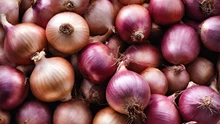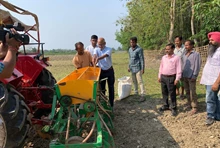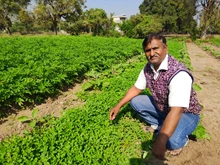
Stubble burning, a harmful agricultural practice, has seen a significant increase in several states in northern India, including Haryana, Punjab, and Uttar Pradesh, during September.
Additionally, there has been a noticeable rise in such incidents in Madhya Pradesh and Rajasthan during the same period compared to the previous year.
However, the central government remains optimistic about reducing stubble burning cases this year by implementing various measures. During the critical paddy harvesting period in the north, from September 15 to November 30, 2022, there was a 24 percent decrease in burning incidents, with 69,615 cases reported compared to 92,047 the previous year. Punjab reported the highest number of cases, with 49,922 incidents.
According to data from the Consortium for Research on Agroecosystem Monitoring and Modelling from Space (CREAMS), managed by the Indian Agricultural Research Institute (IARI), there were 354 stubble burning incidents in the country during September 15-30, up from 159 in the same period the previous year.
Punjab, which had reported 214 cases of crop residue burning last month compared to 147 in the previous year, witnessed 81 incidents on September 30 and 68 on September 29. The highest number of cases came from Amritsar district, with 174 incidents.
Haryana reported 75 incidents, including 17 in Kurukshetra and 13 in Karnal. In contrast, during the same period the previous year, only one case was observed in Jind. This year, there were 12 incidents in Sonipat, 11 in Ambala, 7 in Yamunanagar, 5 in Fatehabad, and 3 each in Panipat and Jind. These districts are known for their Basmati rice production.
Experts have noted that there was a higher demand from commercial dairy farmers last year to collect crop residues, which is missing this year.
In other states, Uttar Pradesh reported 33 cases of stubble burning, while Madhya Pradesh had 21 cases and Rajasthan had 10. During September 15-30, 2022, there were 10 incidents in Uttar Pradesh, none in Madhya Pradesh, and one in Rajasthan.
Stubble burning has been a recurring issue in these states for several years. Farmers often resort to burning crop residues instead of clearing them manually and selling them as fodder due to economic considerations.
Additionally, since Punjab, Haryana, and Uttar Pradesh do not allow paddy sowing before June 20, farmers have limited time to prepare the fields for wheat planting after the paddy harvest.
This year, the paddy acreage, including Basmati rice, has increased in several states. Punjab's paddy acreage rose to 32 lakh hectares from 31.68 lakh hectares in 2022, while Haryana's increased to 15.2 lakh hectares from 13.9 lakh hectares.
Similarly, Uttar Pradesh saw an increase from 57.78 lakh hectares to 59.01 lakh hectares, and Madhya Pradesh's acreage grew from 32.37 lakh hectares to 33.85 lakh hectares.
The government has taken steps to address the issue of stubble burning. During a workshop on Clean & Green Solutions for Rice Straw Management organized by the Confederation of Indian Industry (CII) in partnership with the Ministry of Agriculture and Farmers Welfare on September 29, S Rukmani, a joint secretary in the ministry, emphasized the government's commitment to helping farmers manage crop residues.
The government has introduced revised guidelines on crop residue management (CRM) and is promoting ex-situ management of straw. It offers financial assistance for the capital cost of machinery through a subsidy of up to 65 percent for projects, with the industry contributing 25 percent towards operational costs. Rukmani highlighted the potential for stubble to be a source of wealth.
In summary, stubble burning incidents in northern India have increased in September, with Punjab, Haryana, and Uttar Pradesh being the most affected.
Despite this, the government is implementing measures to reduce such incidents, including promoting crop residue management and offering financial assistance for machinery. Addressing this issue is crucial for environmental and agricultural sustainability in the region.











